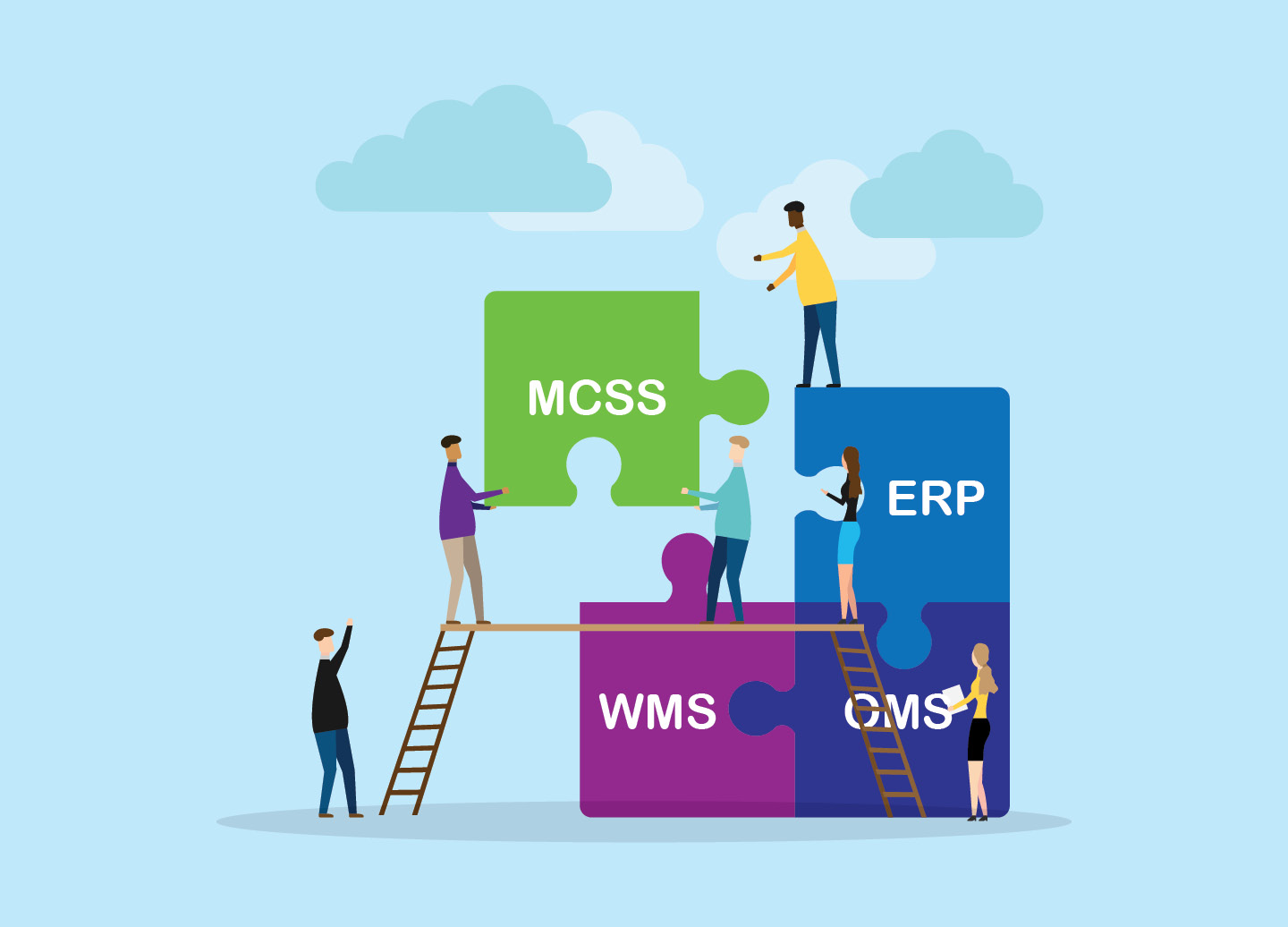How Multi-Carrier Shipping Software Completes Your Enterprise Software Stack

Diving into the efficiency benefits of integrating a multi-carrier shipping solution into your tech stack.
Retailers have had the goal of improving the customer journey for years, with steady advancement. Investing in technology to streamline an organization’s processes can be challenging to align. However, finding creative ways to enhance agility can be achieved through both programs in the current Enterprise Software Stack (ESS) and by adopting new technologies. Multi-carrier shipping vendors recognize our role in the technology stack, especially as customer expectations for shipping performance have increased in recent years.
Shifting to an Expanded Delivery Point Strategy

Although meeting customer delivery expectations with a single carrier is outdated, some shippers still rely on a single carrier, bearing the financial and delivery performance burdens. The shipper faces numerous challenges with a single carrier, including general rate increases (GRIs), surcharges, capacity caps, and delivery delays caused by network issues. These obstacles must be overcome to maintain positive customer engagement. With all these challenges in play, at what point do shippers have to ask, “Does my current parcel transportation management vendor allow our organization the ability to leverage stronger carrier partnerships to exceed delivery demands?”
Bringing new delivery modes to the table requires a different mindset and a system with robust multi-carrier capabilities to assist in the deployment of this new reality. For some shippers, adding a new carrier or service with expedited delivery coverage is a quick win. But for most, this just does not go far enough, and an increase in inventory locations is necessary.
The larger shift in omnichannel operations comes from rethinking delivery origins. By leveraging brick-and-mortar stores or third-party logistics (3PL) locations, shippers are decreasing the time in a carrier’s network. Order Management Systems (OMS) are the principal enterprise technology to enable this shift for new shipment origins. Having a multi-carrier system to support expanded shipping capabilities is critical to the success of this fulfillment strategy.
End-to-End Capabilities in an Enterprise Software Stack
An OMS’s ability to provide real-time visibility and order decision making is the game changer. Leaders in this space, such as Sterling Commerce and Manhattan Associates, are clear examples of the evolution of this delivery mindset shift. Multi-carrier solutions only enhance these robust systems to round out end-to-end capabilities. After all, what's the point of routing an order if there aren't optimized delivery options available from all the origins the organization worked so hard to enable?
On the flip side, a robust multi-carrier solution’s ability to assist OMS functions, prior to an order being picked from a shelf, increases the value proposition. For example, carrier volume balancing, which is the ability to calculate in real-time the available carrier capacity while optimizing for the best-cost carrier service, is an integral part of OMS decision-making prior to the origin being selected. Asking the question for one order and the complexities within can be a head scratcher, asking millions of these questions at full scale weeds out the true multi-carrier solution partners to propel an organization to excellence.
But what does this have to do with the customer experience (CX)? Post shipment activities are now as important as upstream processes in optimizing a retailer’s delivery options. Additionally, customer expectations for simplified tracking and seamless visibility from order to delivery further complicate matters. Multi-carrier shipping solutions play the key role in getting the right data to the OMS or e-commerce tools for the user experience to be fulfilled. In the same way, at what point do shippers need to question their shipping software’s optimization capabilities throughout every step of the supply chain?
Increasing Parcel Efficiencies within the Four Walls of the Enterprise Software Stack
Enabling new delivery origins is critical, however, it will augment, not replace, your warehousing needs within the operation. The role of the multi-carrier solution within the four walls is to promote efficiency gains. Having rigid and reliable shipment execution is the foundation for extending shipping capabilities across workflows. How much does downtime of your shipping solution cost your operations?
[Keep reading: The Hidden Costs of Parcel Shipping System Downtime]
Now that we understand OMS, what about WMS? The multi-carrier experience and performance at scale bolster the Warehouse Management System (WMS) to achieve its greatest capacity. Multi-carrier solutions can perform functions with greater agility and utility than a large WMS. A common example is the output documents. While both WMS and multi-carrier solutions can print documents, it’s best to look at the maintenance or future modification processes to determine the best solution for the feature/function.
WMS solutions have evolved to ease that management and modification burden for shippers. Through partnership and open technology frameworks, integrations with multi-carrier solutions and other warehouse peripheral solutions have become more efficient. Like OMS solutions handling upstream processes, multi-carrier solutions combined with WMS solutions are crucial. They inject shipping logic to alleviate tasks before pick and pack functions commence. Optimizing early in the fulfillment process gets the heavy lifting done and out of the way for execution to streamline further down the line.
Breaking it down, the advancement of warehouse automation equipment in the warehouse has surpassed basic systems like conveyors or pick to light systems. This results in significant efficiency improvements. Smart pick solutions and goods-to-person robotics tap into the decision-making capabilities of the WMS/multi-carrier shipping solution relationship.
It may seem trivial to manage your barcode print process until advanced automation equipment, like robotics or high-speed sortation, allows for the quick removal of cumbersome bottlenecks downstream. [Explore further: Labeling] The role of multi-carrier software in both upstream and downstream tasks is critical for improving warehouse efficiency. This encourages shippers to monitor and evaluate their shipping software, asking, “Is your multi-carrier solution fast enough to keep up with automation?”
Use of Analytics and Actionable Shipping Data

Analytics may not be a new trend, but it has been gaining traction. The ability of modern retailers to tie customer outcomes and make real-time edits to the operations is essential. Shippers may use in-house analytics platforms like Google or Tableau, either with teams of analysts or by hiring consultants to gather and interpret the data. [Ask No Questions and Hear No Lies: Benefits of a Supply Chain Consultant]
Use of the data is one thing, but having a meaningful feedback loop into the order lifecycle is key. Many shippers will look to leverage industry consultants, like enVista or Elevate, to make sense of the data. A multi-carrier shipping solution can integrate these outcomes into critical operational steps, contributing to the continuous improvement loop. This applies whether the shipper has fully embraced new omnichannel workflows or practices traditional warehouse operations.
[Learn More] Transportation Business Intelligence
Completing the Loop
Multi-carrier collaboration with other solutions in the enterprise technology stack is critical for retailers, regardless of their size or stage of business. A synergized and correctly aligned solution will play a major factor in the successful operation of modern direct-to-consumer (DTC) fulfillment.
For a multi-carrier solution that has supported over $845 billion in customer revenue, trust ProShip, the industry-leader in automated parcel shipping software for mid- to enterprise-level shippers. To find out more, schedule a discovery call and start the process of enhancing your distribution and fulfillment program.
Author Bio
Tony Verrill is Vice President of Enterprise Sales at ProShip, with 10 years of experience in multi-carrier shipping across solution sales and partnerships. Tony enables today’s top retailers, manufacturers and third party logistics providers to streamline their omnichannel fulfillment strategies.

